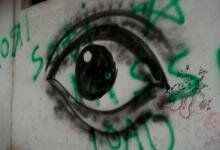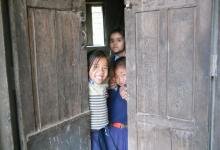Fleeing “Ethnic Cleansing” in Bhutan
The portrait of a Nepali-Bhutanese family, escaping from the world’s happiest nation.
Bhutan, a tiny country wedged between China and India, is often described as the last Shangri-La. The country’s guiding principle is Gross National Happiness as opposed to the universal measurement of Gross National Product. In 2008, the fourth king, Jigme Singye Wangchuk, abdicated the throne to his 30-year-old Oxford-educated son, Jigme Khesar Namgyal Wangchuk, adopting “constitutional monarchy” and “parliamentary democracy”. To a casual observer, it is tempting to believe a new egalitarian era has dawned in Bhutan.
But beneath the facade lies a different narrative. In order to preserve its Tibetan Mahayana Buddhist culture and identity, the country expelled or forced to leave nearly one fifth of its population. In one of the world’s least known episodes of what many scholars believe was an “ethnic cleansing”, the Nepali-origin, mainly Hindu Bhutanese fled their homeland in the late 1980s and early 1990s.
The Odaris, whose stories are chronicled below, were one of thousands of families who fled the Himalayan kingdom. They also became one of the first families to be resettled in the United States after the country started to resettle 60,000 refugees (seven western countries followed suit) in late 2007. By the end of 2010, 40,000 of them have been resettled in those countries, with 38,000 in several cities and communities across the U.S.
I met the Odaris in April 2008 in Pittsburgh where I was working on a number of stories about their adjustment to life in the U.S. What follows is a series of personal history of four members out of the nine-member Odari family.
Bhawani Prasad Odari, 53 (father)
There was no option but to leave. So I sold my cattle, left my foodstuffs and the house right there. I and my wife managed to carry our Bhutanese citizenship certificates and some belongings. All I had was 3,000 rupees.

I still remember the first day in the hut. The dusk fell as we busied ourselves in arranging our belongings. We couldn’t cook food. So we took beaten rice as the meal for the night. It was far better than the congested and grimy settlement of Mai. I had to worry about not only my kids (then aged 10, 9, 7, 6, 4, 3, and 2) but also my ageing parents.
But sitting idle in the camps was not a solution. So I requested an “out pass” (that allowed refugees to leave camp for a week) from UNHCR and left for India. I started a small trade: I would buy clothes, spices, tea powder and vegetables in India and sell them to fellow refugees. But I had to bribe Nepali police at the Indo-Nepal border. Nevertheless, it helped raise my kids and pay for their stationery and clothes.
As my kids grew up and became adults, we faced another problem: the food was never enough to fill their hungry bellies. Initially, we were entitled 52 kg of rice as rations for fifteen days. But a couple of years later, it was reduced to 50 kg. We had to buy additional 15 to 20 kg. But we were doing much better than other refugees, thanks to my small business.
I was working on a farm when I got the news about moving to America. IOM (International Organization for Migration that facilitates refugees’ travel and screening for resettlement) had called on us. The next day, I along with my family went to IOM office in Damak. Altogether, 360 refugees were summoned. After interviews and health checkups, my family left the camps on April 20, 2008.
I wasn’t feeling well when we (my wife and four children) landed in New York. It was the first time I was flying for too many hours. We were expecting that our three children, who had arrived in the U.S. three weeks before, would be waiting for us at the airport in New York. Instead, we were directed to the departure. We boarded another plane to Pittsburgh. I was ill with fever and cough. I felt a little at ease after meeting my children at the Pittsburgh airport. We headed to Prospect Park (in suburban Pittsburgh).
Pittsburgh appeared to be akin to my native Bhutan. Coming from the rundown refugee camps in the dusty plains, it immediately attracted me.
Topographically, Pittsburgh appeared to be akin to my native Bhutan. Coming from the rundown refugee camps in the dusty plains, it immediately attracted me. But I was also worried that I didn’t speak English. While traveling in India, I used to communicate in rudimentary Hindi and was aware of the significance of local language in a foreign land.
Nowadays, I’m working along with my children and other fellow refugees at Quality Driven Copack, a frozen food packing factory. I regularly visit the local Hindu temple in Monroeville, a half-an-hour drive from my apartment. We were expelled from Bhutan for observing our tradition and culture. We would like to exercise our freedom in America.
Yani Maya Odari, 26 (2nd eldest daughter)
I would go to the nearby forest to collect grass for the goats. This was where I was oftentimes caught by the forest authorities.

My earliest memory of the refugee camp is that of the first day in Beldangi where the UNHCR had allocated spaces to refugees to construct their huts. I remember my parents and other refugees clearing the dense forest and cutting bamboos. I neither have any recollection of Bhutan nor that of the first camp on the banks of Kankai Mai River. I was six when my family left Bhutan. My most pleasant and saddest moments are of the refugee camps where I spent most of my childhood.
As we settled in the bamboo hut, life seemed a little better. We had a space, albeit too small to call our own. A year later, I started to attend school which was exclusively for refugees kids. The teachers were also refugees who had studied in Bhutan. We were provided with free education up to grade 10.
My typical day started at 3:30 am. I studied my course books till 4:30. Then I would take the plastic buckets to the water tap. We had to queue up in order to fill the water because it was only in the wee hours the water tap ran. In dim kerosene lamps (no electricity in the camps), I would study and do homework till daybreak.
At the crack of dawn, I would again head off to the public tap. There, I would fill water into my buckets and also take bath. At 7:30 am, I would take breakfast and leave for school. I would return home at around 4 pm. Then I would either do my homework or again fetch water. We had a small grocery store in a bamboo hut, run by my parents. I would take turns to allow my mother to leave for cooking at home.

















